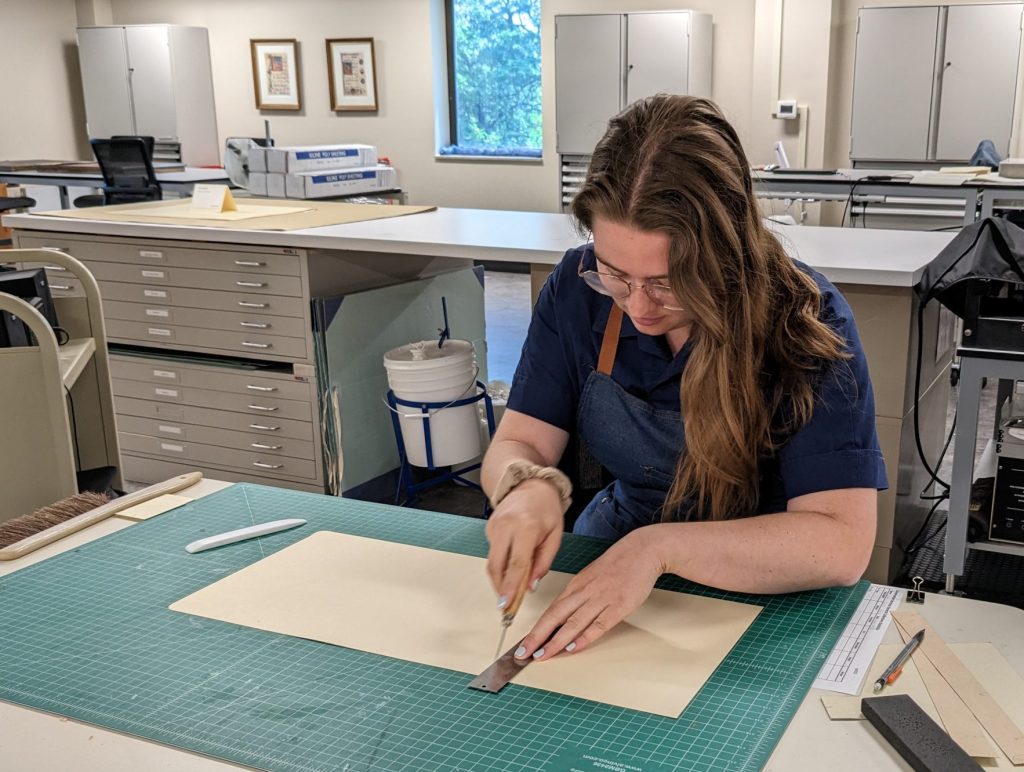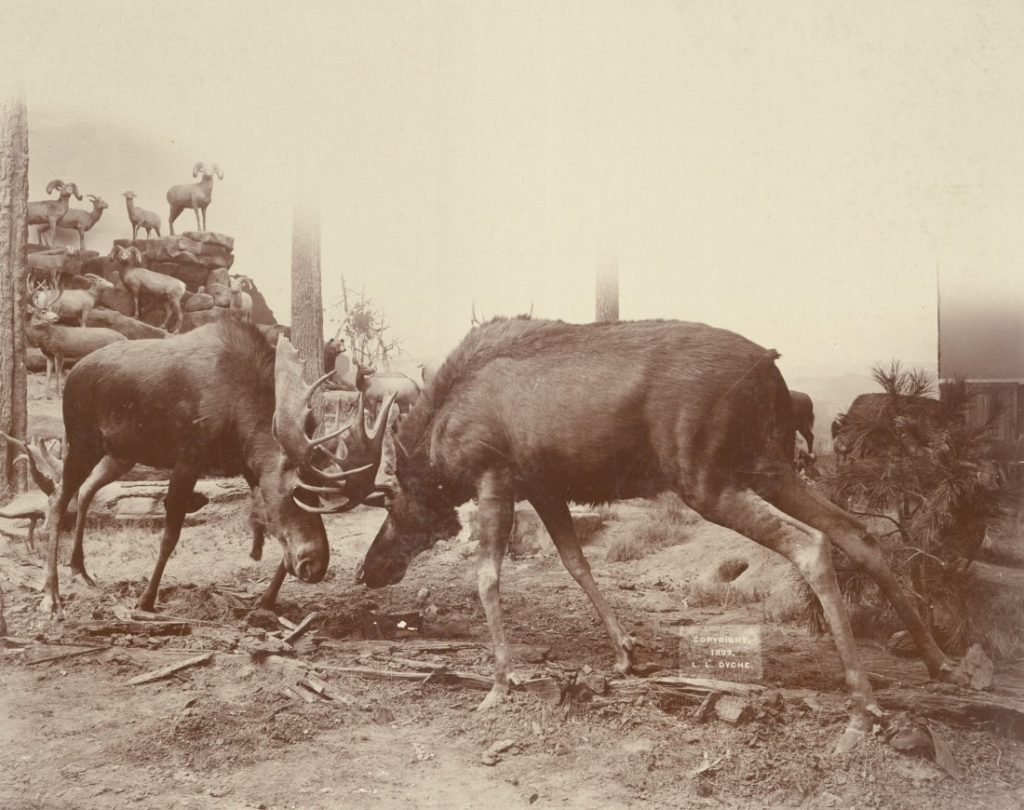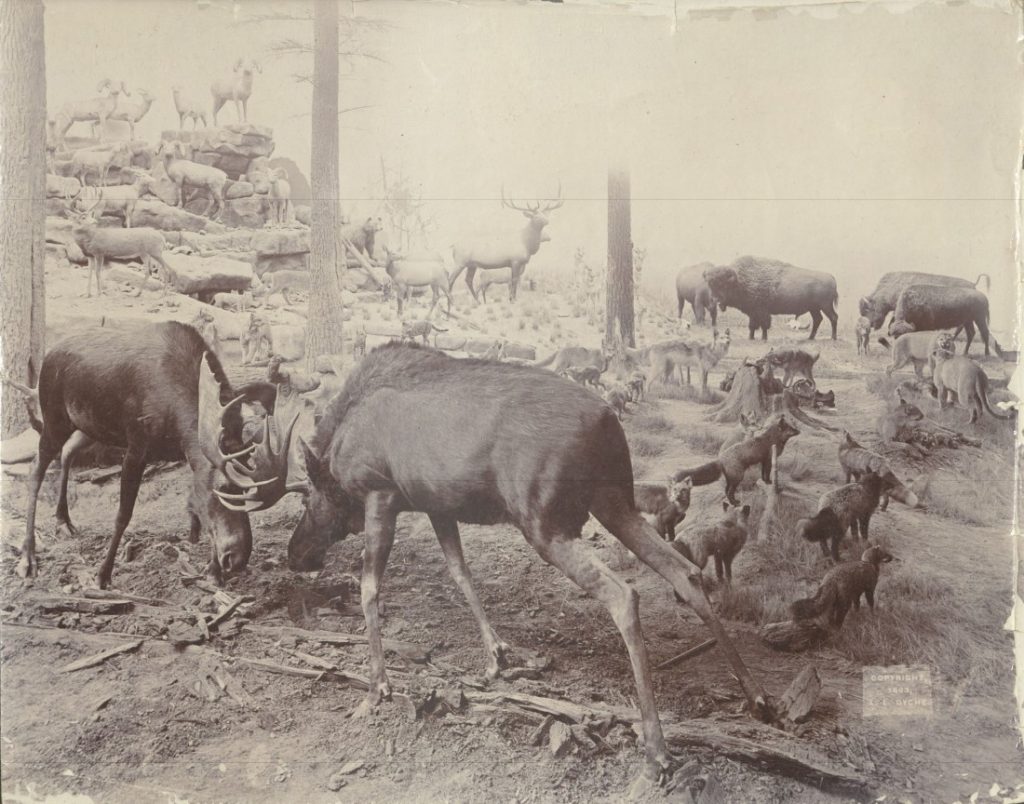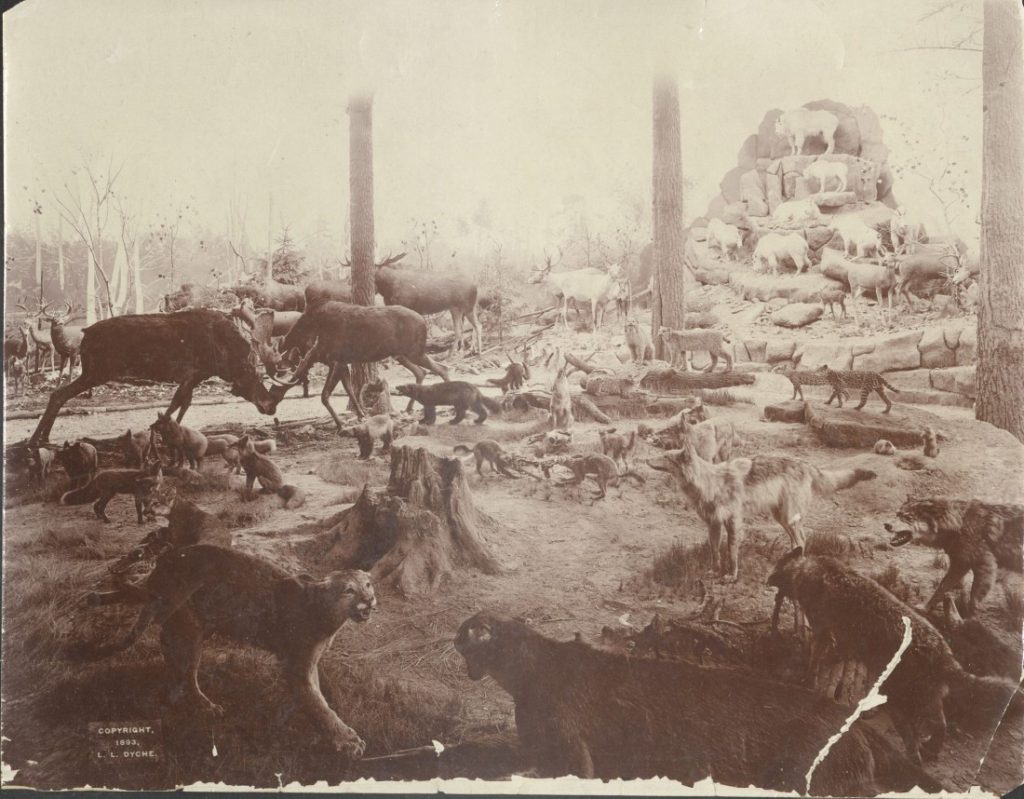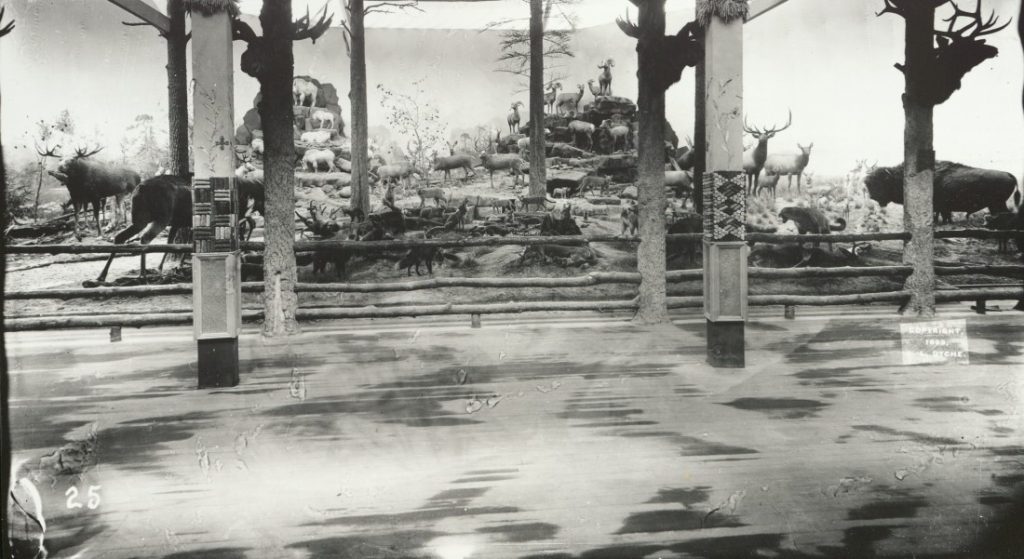Student Spotlight: Sarah Jane Dahms
June 6th, 2023This is the latest installment in a series of posts introducing readers to student employees who make important contributions to the work of Spencer Research Library. Today’s profile features Conservation Services student assistant Sarah Jane Dahms, who answered a few questions about the projects she works on at Spencer.
What is your role?
Here at the Spencer, I work in the Conservation Department. We work in a lab setting to stabilize and repair books and materials throughout the KU library system. As a student I work with materials that are in circulation. I do anything from stapling music pamphlets into pamphlet binders, securing dust jackets within archival plastic covers, and housing delicate books and materials in custom boxes to mending and rebinding books. It is a job full of conversation, collaboration, and problem solving. Each item has its own needs and desires, and it is our job to pay attention to the material and work with it, instead of overcorrecting or forcing a repair. No two days in the lab are the same.
What are you studying, and what do you hope to do in your future career? Has your work at KSRL changed how you look at your studies or your future career plans in any way?
I recently graduated this Spring with degrees in both English and Visual Arts. Working in the Conservation Lab gives me a unique space to combine both aspects of my study. Here, I constantly work with books, but I have an opportunity to get to know the materials creatively. Over the course of a few minutes to several hours, I collect clues about the history of the material to create a repair that supports the overall environment of the material. If I do my job well, then my repair should exist within the same world as the original did. Working here has honed my creative hand skills. We work on multistep processes where a millimeter makes all the difference, but we have the chance to create things that are aesthetically pleasing. Because of my experience here, and my time studying for a book arts certificate at KU, I will continue combining English and Art in a Master of Fine Arts this fall. Through the University of Alabama, I will study book arts in their Library and Information Sciences Department. This path was entirely inspired and supported by my time at the Spencer over the last two years. Through repairing and rebinding books, I have completely fallen in love with book structures and creation. I am honored to continue creating books artistically and focusing on their quality and longevity.
What part of your job do you like best?
One of the most important factors of my job is flexibility. Yes, our schedules are largely flexible, but the position itself allows for each student to shape the role. Over the course of the first six months every Conservation Student learns around fifteen multi-step treatments. These treatments range on a scale of technical hand skill and creative potential. Every student who comes through the lab falls in love with one, if not several of these creative processes. We each do all treatments, but many of us specialize in one or two of these areas. Because of this flexibility, students from all areas of campus thrive in the work environment. It allows us all a space to shape our job, and to get to know other students with different backgrounds and skills from our own. Separately from this day-to-day flexibility, we often work on long-term projects as a group. Sometimes the projects last weeks or months, as we move collections around the library. These projects give us time to explore the library and walk amongst hundreds of unique books and materials.
Sarah Jane Dahms
Conservation Services student assistant

